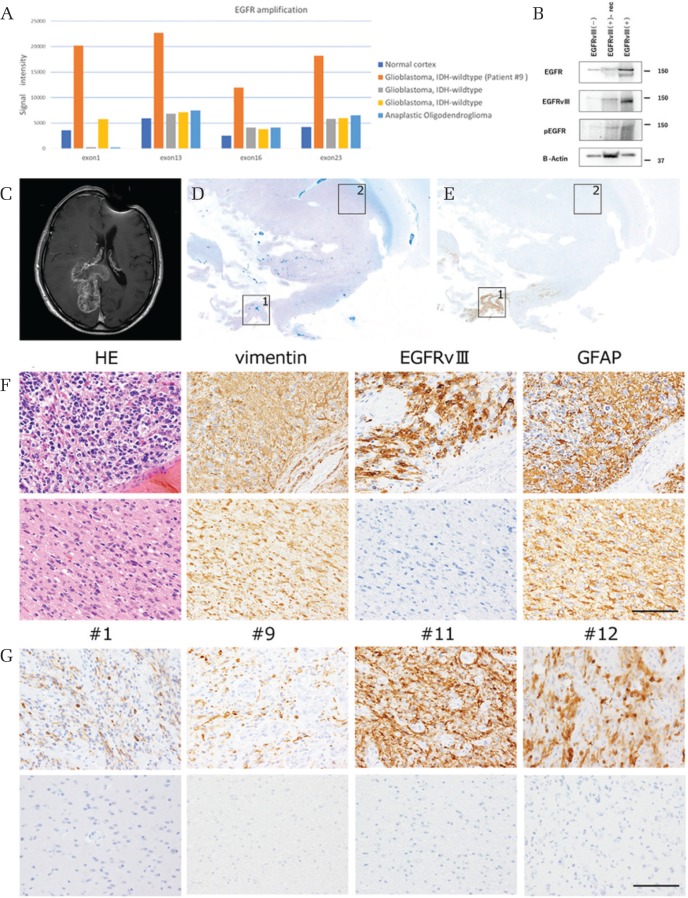Fig. 1.
(A) Multiple ligation-dependent probe assay. Horizontal axis means EGFR exon number and vertical axis means signal intensity. One “glioblastoma, IDH-wildtype” patient (case #10 in Table 2) showed higher signal intensity compared with other specimens. (B) EGFR antibody recognized 170 and 145 kDa bands, which correspond to wtEGFR and EGFRvIII, respectively in case #10 and a recurrent glioblastoma, IDH-wildtype case, but not in an anaplastic oligodendroglioma, IDH-mutant case. EGFRvIII antibody recognized the only the 145 kDa band. (C–F) Representation of the features of case #5. (C) T1-weighted magnetic resonance image with contrast enhancement (MRI-T1CE) demonstrates a large tumor in the right occipital lobe. (D) A histology section of the resected brain. Klüver–Barrera stain. The central portion of the tumor indicated by square 1 shows a high nuclear concentration, whereas the peripheral portion indicated by square 2 exhibits relative myelin pallor. (E) A serial section immunostained with the EGFRvIII antibody. EGFRvIII immunoreactivity is seen in the cellular portion of tumor. (F) Higher-power magnification views of the cellular area (upper panels: corresponding to square 1 in D and E) and the peripheral portion (lower panels: corresponding to square 2 in D and E) of the tumor. In the cellular areas, highly cellular tumor cells show immunoreactivity for vimentin, EGFRvIII and GFAP, having multiple fine processes, whereas in the peripheral portion the infiltrating tumor cells show immunoreactivity for vimentin and GFAP, but not for EGFRvIII. Scale bars = 50 μm. (G) Representation of the features of cases #1, #9, #11, #12. The tumor cells expressing EGFRvIII existed in the central portion of the tumor (upper panels), but not in the peripheral portion (lower panels). The tumor cells heterogeneously expressed EGFRvIII in the tumor and the positive ratio at the site with the most positive cells was different between tumors (23–100%).

